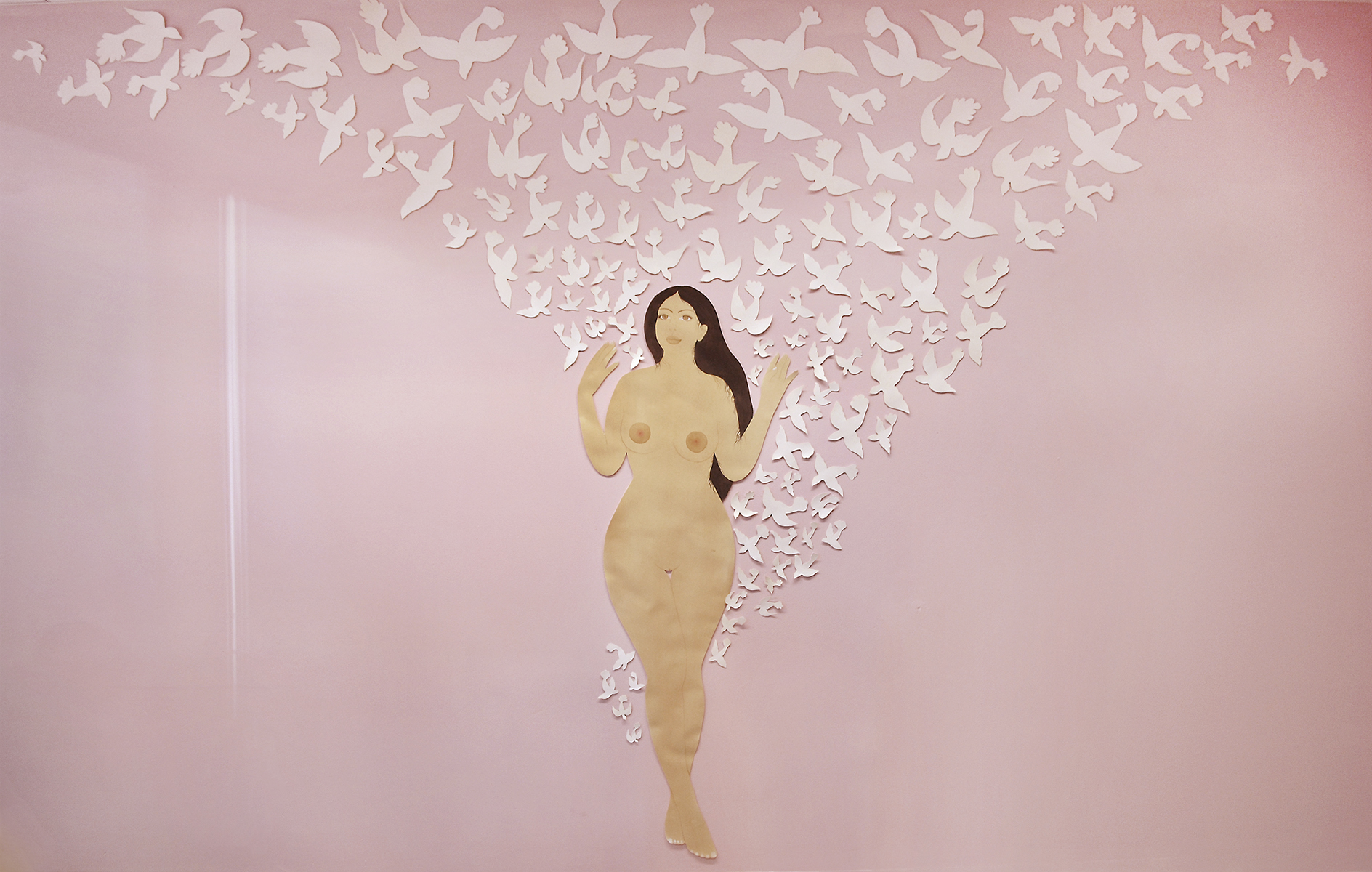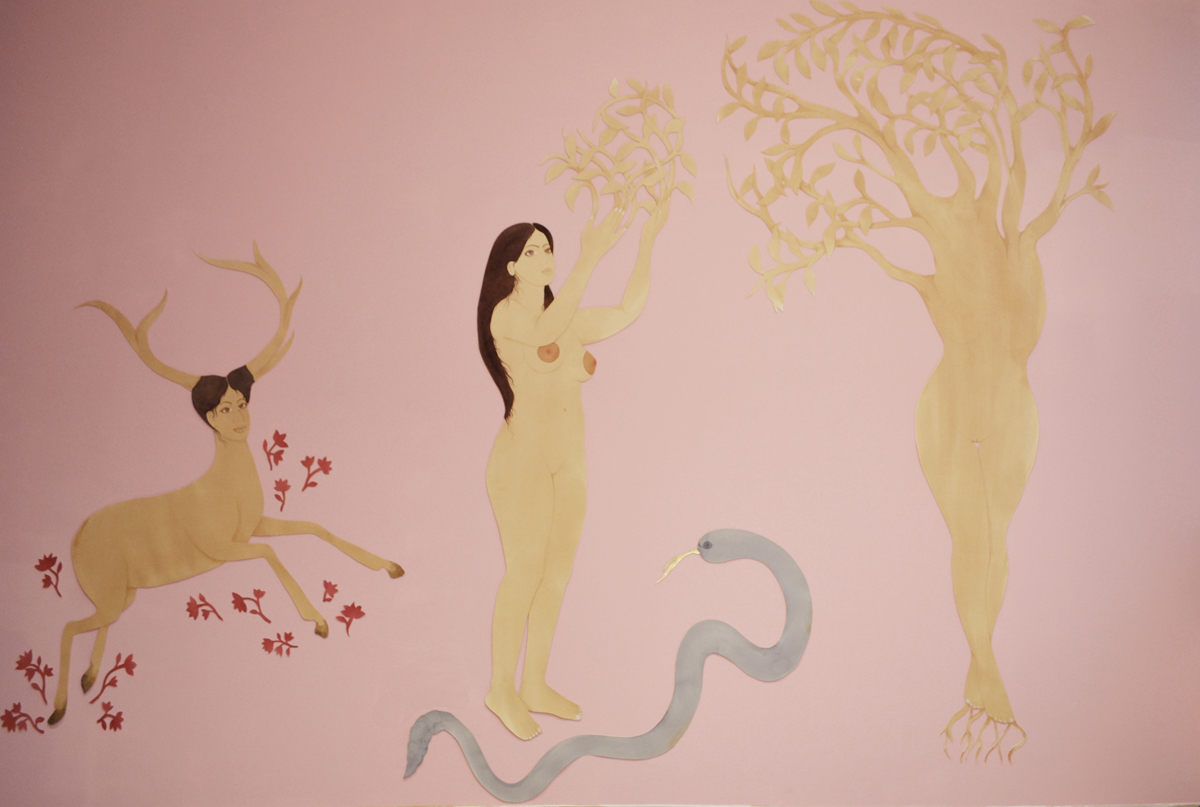Hiba Schahbaz
THE GARDEN
Vernissage: March 6th, 5-9pm
Dates: March 7-12, 2018, 11am-6pm
SPRING/BREAK
4 Times Square, NYC
Entrance at 140 West 43rd Street
Artwork available for purchase here:
https://springbreakartfair.com/pages/art-works
PRESS
ArtNet 10 Out-of-This-World Installations at the 2018 SPRING/BREAK Art Show
Hyperallergic Spring Break Is an Oasis for Art Fair Haters
Hyperallergic Watering the Imagination at Spring/Break Art Show
Greenpointers Armory Week: North Brooklyn Artists and Galleries
i-D This Pakistani-American artist is making classical art less white and male
Field Projects is pleased to present HIBA SCHAHBAZ THE GARDEN at SPRING/BREAK 2018.
Defiantly. Seductively. Carefully. Coyly. Angrily. Insolently. Even; playfully...
Who is it that determines the adjective governing the gaze? Who is it that tames the wild and grooms a garden? Is it possible that the garden grooms us? That it captures our sensual intimacies and ensnares them in a fantasy of Edenic subsistence?
“The Garden” radically transforms the traditional regulations of Indo-Persian miniature painting. This is Pakistani-American artist Hiba Schahbaz’s most recent work, presented as an installation of ethereal, quasi-mythological figures against a dreamy pink painted ground. These walls recall the pastel tones and spatial flattening of Persian masterpieces such as Sultan Muhammad’s exquisitely painted Shahnama of Shah Tahmasp (c. 1522CE), yet their scale carries the weight of monumental European history painting. Modulation between cultural traditions is characteristic of Schahbaz’s work in her process, forms, and subject matter.
The garden has a special significance in the history of Indo-Persian miniature painting and culture. It was a space of sensual indulgence, filled with the intoxicating perfume of night blooming flowers accompanied by gently trickling water wheels–– an essential part of the complex Persian irrigation system. Depictions of these waterways became a compositional tool in historic Indo-Persian genre painting; flattened landscapes provided a swath of emotive color that became emblematic of miniature illuminations. The land is equalized in these compositions and, as Schahbaz has noted, it becomes “Eden-like” in its egalitarian color fields.
It is impossible not to hear Hiba Schahbaz when standing before her works. Her vocabulary is ancient but her inflection is contemporary and powerfully feminine. She completed a rigorous study of the venerable and traditional technique of Indo-Persian miniature painting in Lahore and employs this process to create works that challenge conceptions of the ‘Western’ canon. Grabbing onto imagery and narratives traditionally defined by the patriarchy, Schahbaz tells the stories of antiquity, challenging the inflexible rules of miniature painting and recontextualizing the art form to accept and embrace a female perspective.
Works like Standing Self Portrait with a Rose (After Picasso) ask viewers to question the history of cultural appropriation, gender, and race. They demand to know who mythology belongs to; and who deserves to become its subject? Schahbaz uses her own body as a model; playing out and performing poses from the mythological canon of art history in her studio. She is both observer and observed, a fact that becomes immediately clear when confronted with her works.
Viewing these floating figures–– whose skin tones are painted with the colonial materiality of black tea from Pakistan–– provides an escape into the contemplative, engrossing space of a miniature painting; yet we (as her viewers) are submerged in this, not through connoisseurial close looking, but through a physical, three dimensional encounter. Schahbaz has expanded the miniature off of the page and into our space, real space; this is a reality that was previously only a fleeting fantasy–– a space filled with glimpses of a woman's dreams, intimacies, mythologies, heritage. It is an imaginative visual freedom that Hiba has graciously allowed strangers to partake in.
Shahab Ahmed writes in “Six Questions About Islam,” that contemporary and historic Islam has an almost dualist existence: as a conceptual unity and a fragmented force. This sense of dualism pervades many Islamic writings and can even be seen in the conception of the visual arts. Abu ‘L-Fazl Allami wrote in the Ain-i Akbari that “white and black are believed to be the origin of all colors.” These opposite colors create all other color in Mughal color theory. In Hiba Schahbaz’s work we can see this duality play out as she questions the gaze, the garden, and the body’s relationship with nature, religion, mythology, history and gender.
Uninhibited and exceptionally clever, Schahbaz’s work spits in the eye of both the patriarchy and colonialist legacies. Her figures are simultaneously self-portraits and allegories that both reveal and hide, collapsing subject and object in the dream-space of a timeless garden.













